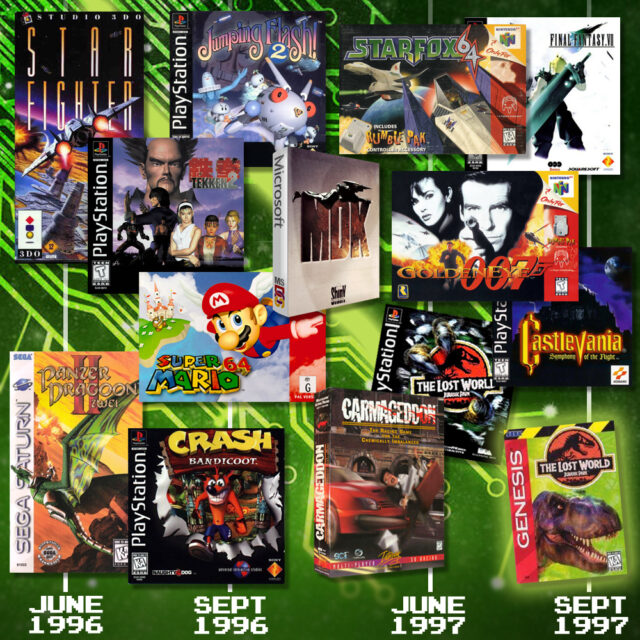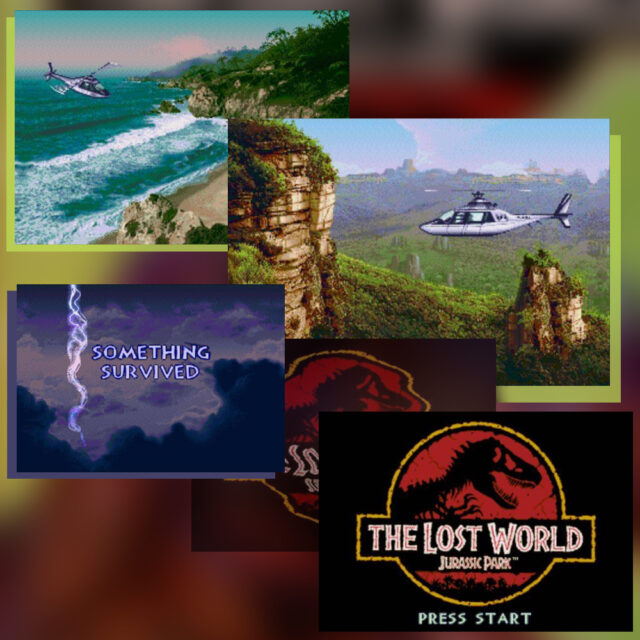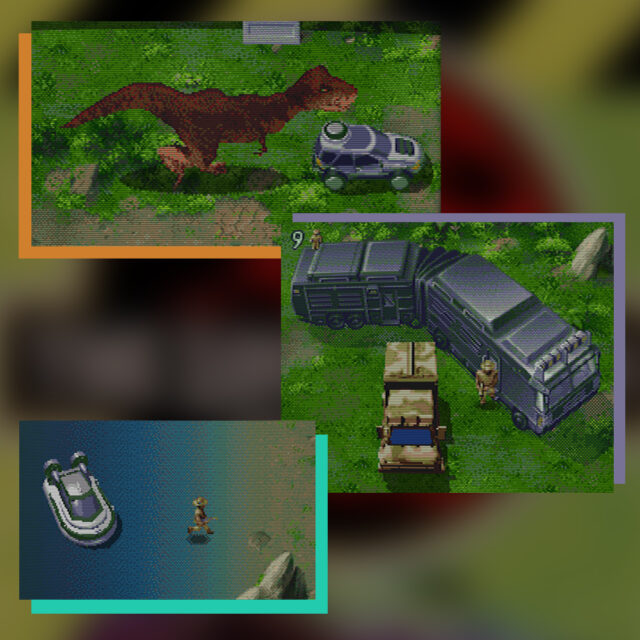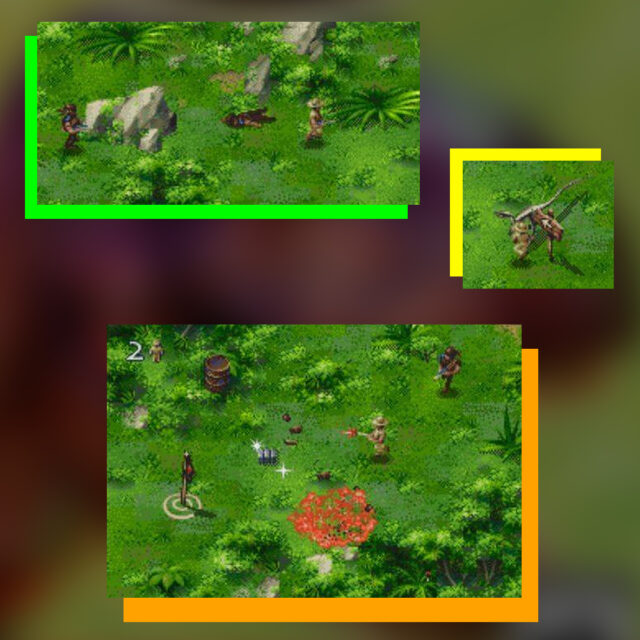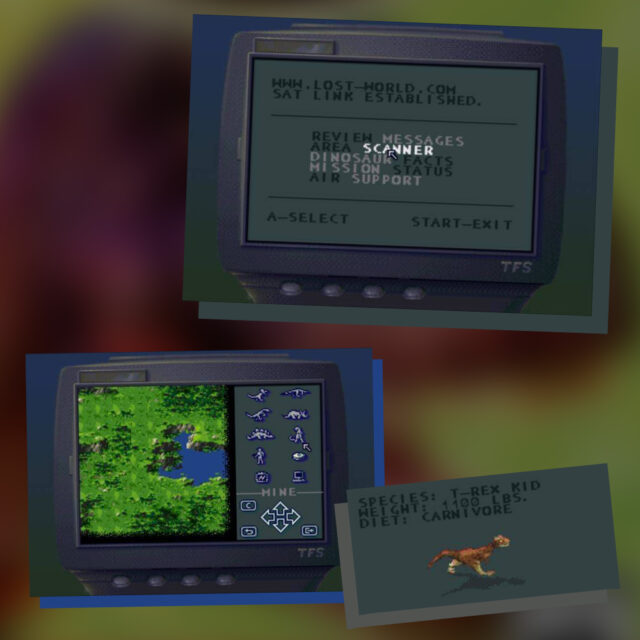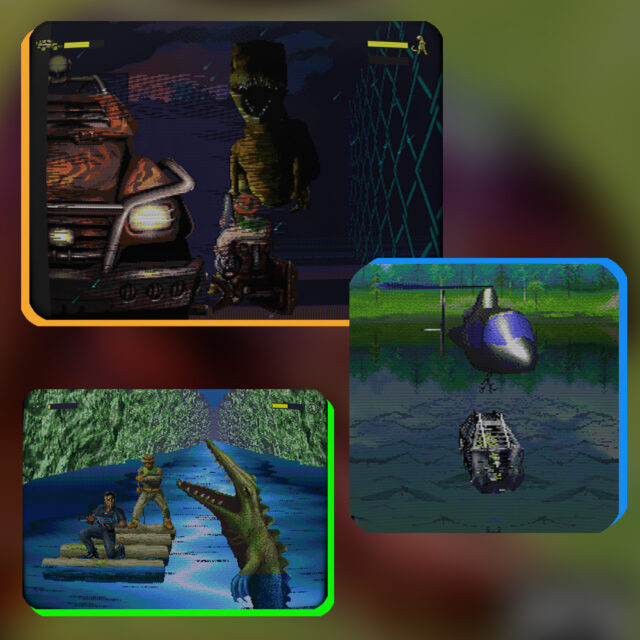I just discovered the secret best Lost World console game

I don’t remember how I found it in my collection of games but I scrolled across The Lost World: Jurassic Park for the Sega Genesis recently and — wait!
The Lost World… The Jurassic Park sequel that came out in 1997?
On the Genesis?
In 1997?!
No wonder I had no recollection of this release. In 1997 I was the closest I would ever be to a working games journalist and only thinking about the latest releases and flashiest graphics. By the time this 16-bit cart hit stores we were already two years into the PlayStation, one year on with the Nintendo 64, and long past the early 3D offerings of the 3DO and Jaguar. Not to mention the countless 3D releases on PC touting physics simulations and the latest in colored scene lighting. Even its comparable 2D competitors of the day were dazzling in comparison. This game stood no chance of being noticed.
But it’s funny how happenstance can hit you 25 years later and this game has surprised me in many ways as I’ve been playing through it recently.
Still the most striking thing about the game is when it was released. So much so that I had to spend part of a day making this graphic. Not only is it among the last titles released for the Genesis, the game was surrounded by so many amazing games that are still renowned today. This was a year after Mario 64 and Crash Bandicoot, and just weeks apart from Final Fantasy VII and Symphony of the Night. There was even a flashy new Lost World game released on PlayStation one month before the Genesis version.
For a Genesis title the game opens with some lush, if plain visuals. Another corporate copter flies to Isla Sorna as foreboding skies flash out the warning “Something Has Survived”. Aside from a few visual elements though, the game has nothing to do with the original novel or the 1997 movie. In fact, the only Hollywood likeness is a digitized still of the two T-Rexes from the movie on the main menu and game over screens.
Rather than follow the plot of the book or movie, the setup here is that you’re a nameless bounty hunter on Isla Sorna out to stop bandits and accomplish some assorted tasks. An equally nameless “Central Command” sends you periodic text messages with vague details on what to do… and that’s about it.
The gameplay is the familiar top-down style shooter that always seemed to be more popular on SNES. Ocean’s Jurassic Park on SNES immediately came to mind here which was already four years old at this point and still looks better than this game.
But developer Appaloosa does what it can with Sega’s aging hardware and throws in an unexpected amount of variety. While the jungle greenery is repetitive and mostly flat, the terrain has a detailed lushness and doesn’t feel like a patchwork of individual sprites. The motion is smooth too, and your movement swings the camera ahead of you giving it a more organic feel than you can see in still images.
Aiding in your assorted tasks are a handful of driveable vehicles. Sadly it’s not the famous Ford Explorer from the movie, but the SUV and hovercraft have a fast and drift-y feel that break up the normal on-foot pace of things. They’re a little clunky to maneuver but thankfully you don’t take damage from hitting walls, rocks, and trees.
Despite the gusto of the back-of-the-box descriptions, the game is much more focused on exploration than non-stop action for most of the levels. You’ll be facing off against just one or two dinosaurs or bandits at a time. The human enemies are pretty easy to deal with and conveniently drop ammo when they die.
// Rewards for Sparing Dinos & Clever Weapon Mechanics
The dinosaurs, however, offer a unique approach. Yes, you can blast them with guns, land mines, grenades, and missiles, but you can also tranquilize them. The taser seems pointless to me but the dart gun can be used at a distance and knockout gas grenades can easily be thrown over shoulder when they give chase.
Knocking them out rewards you with a JP token that can be used to call for a supply drop at any time. You can carry up to five of them and each increment will deliver you more loot. A single token will get you a medkit to keep you alive but if you manage to collect a sixth token you’ll automatically get health, armor, ammo, and an extra life dropped at your feet. It’s incredibly satisfying and introduces some variety to the flow; mindlessly blasting away until your supplies and health run low, then playing more carefully to restock.
Adding to the variety are the weapons themselves. Gas grenades have the side effect of putting out fires that sometimes block your way while explosives can destroy suspicious roadblocks that often hide secret areas. You’ll also see ammo lying around or find it inside objects, but be mindful that you can destroy these life-saving supplies by accident. There is nothing more deflating than accidentally blowing up or running over an extra life!
The only drawback of this versatile arsenal is cycling through to the weapon you want when you need it. It can take up to 9 presses of the A button to loop around to a gun you might need for just one shot. A press-and-hold shortcut system would’ve been great here but you can usually make do with whatever weapon you jump to when an unexpected dino or bandit appears.
Lastly is something I don’t remember seeing in any other game, past or present. If you leave spare ammo on-screen the human enemies will run to it and use it against you! A trigger-happy NPC with homing missiles is devastating so, as with litter, clean up after yourself or you might lose a few lives. //
How late was this Sega Genesis release? Your menu system is a dang PDA complete with mouse cursor and website URLs. They graciously make the map the default selection because you’ll be using it a lot; toggling on desired objectives and scrolling around to see which way you need to go. The maps are generally large and twisty, giving the game plenty of chances to spawn dilophosaurs and trodons in your way. A waypoint marker would’ve been a great tool here but it isn’t too painful peeking at the map every time you reach a crossroads.
You can also review your brief mission objectives and peek at the game’s dinosaurs. There isn’t much info about them — and not many to see in total — but it was worth scrolling through to see that the juvenile Tyrannosaur is referred to as “T-Rex Kid”.
// Pseudo Open Worlds & Dazzling Demoscene Visuals
Another surprise is the game’s layout. Rather than the typical level-to-level style, you’re dropped into different small overworld maps and pick the order to complete 3 connected levels before unlocking a “boss fight”. The sub-levels are frequently the “find X number of X item” style but there are some unique tasks like luring Stegosaurs into cages. Unfortunately there are also several escort-style missions, and although they are each unique, they’re also just as painful as you’d expect from late 90’s escort missions.
Capping off each map is the “boss fight” which doesn’t feel so much like a major encounter as a minigame. All of them feature impressive 3D scaling with demoscene effects I can’t remember seeing anywhere else in the Genesis’ library.
Tearing through a forest on a motorcycle, dodging wildlife on a river raft, using that weird extendable SUV from the movie to fight a T-Rex; each has a dazzling look to it. Sadly, that dazzle is dulled by how vague and repetitive these scenes can be. //
I peeked into this game on a lark but have come out of it quite impressed! I was so excited about the grandeur of the PlayStation’s Lost World title in 1997 and then quickly crushed by its janky controls and absurd difficulty. Little did I know at the time that the secret best Lost World game was two generations back in this unassuming little cart birthed directly into the bargain bins.

